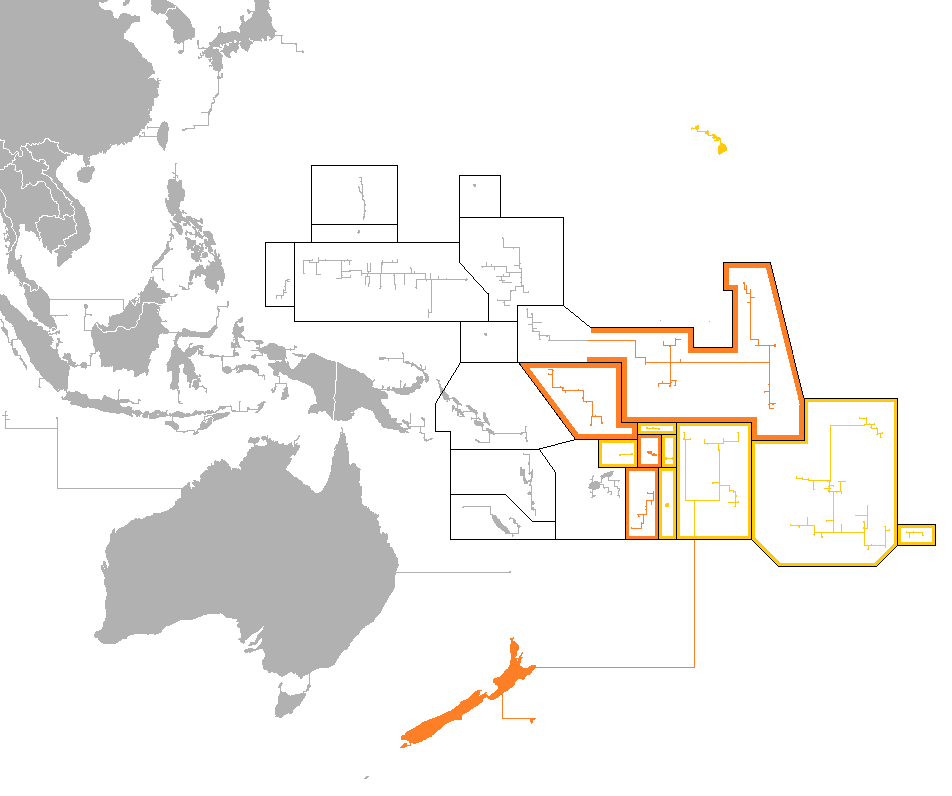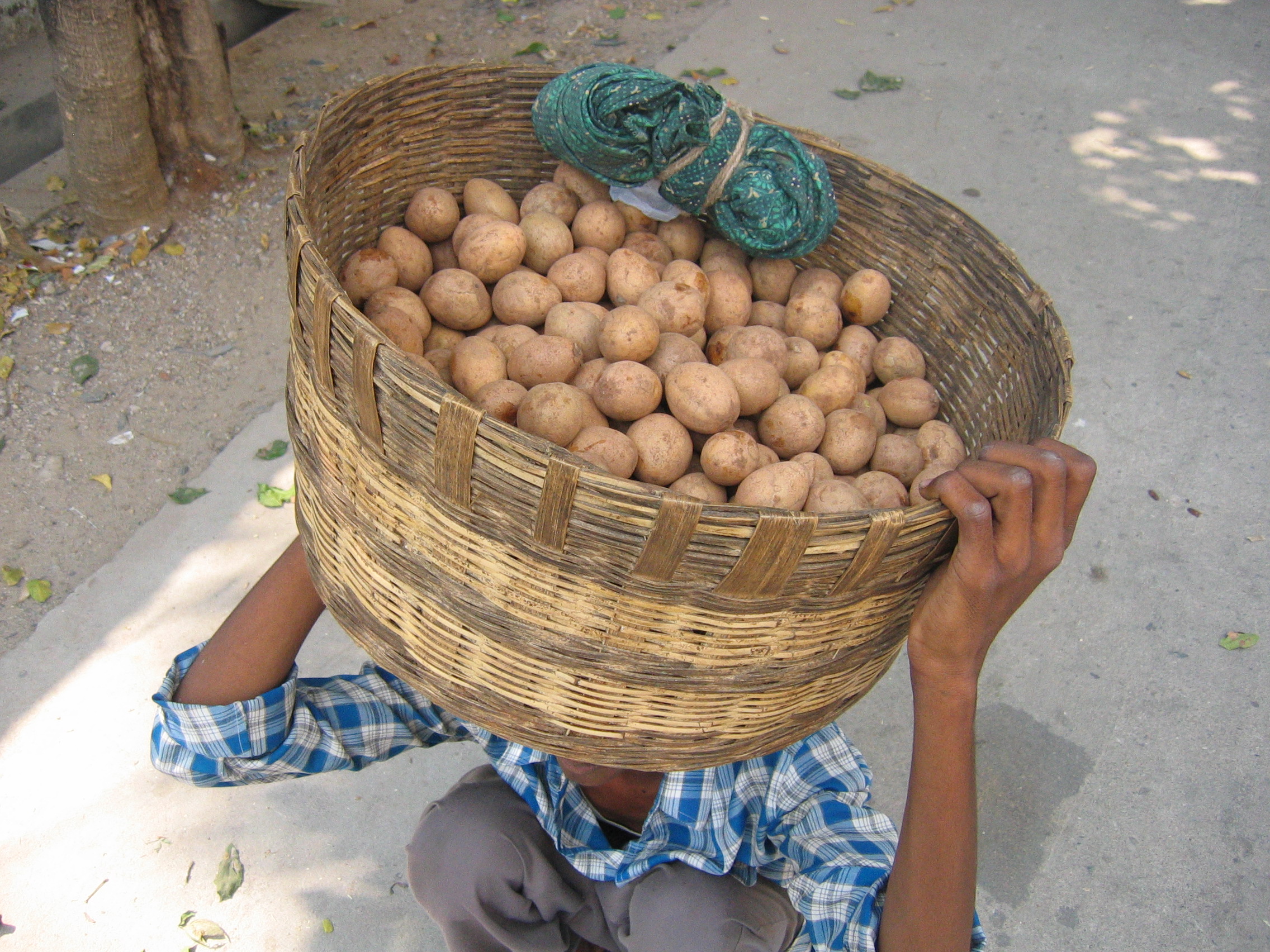|
Bactrocera Tryoni
''Bactrocera tryoni'', the Queensland fruit fly, is a species of fly in the family Tephritidae in the insect order Diptera. ''B. tryoni'' is native to subtropical coastal Queensland and northern New South Wales. They are active during the day, but mate at night. ''B. tryoni'' lay their eggs in fruit. The larvae then hatch and proceed to consume the fruit, causing the fruit to decay and drop prematurely. ''B. tryoni'' are responsible for an estimated $28.5 million a year in damage to Australian crops and are the most costly horticultural pest in Australia. Up to 100% of exposed fruit can be destroyed due to an infestation of this fly species. Previously, pesticides were used to eliminate ''B. tryoni'' from damaging crops. However, these chemicals are now banned. Thus, experts devoted to ''B. tryoni'' control have transitioned to studying this pests' behaviors to determine a new method of elimination. Identification Adult ''B. tryoni'' flies are reddish brown in color, have distinc ... [...More Info...] [...Related Items...] OR: [Wikipedia] [Google] [Baidu] |
Tephritidae
The Tephritidae are one of two fly families referred to as fruit flies, the other family being the Drosophilidae. The family Tephritidae does not include the biological model organisms of the genus '' Drosophila'' (in the family Drosophilidae), which is often called the "common fruit fly". Nearly 5,000 described species of tephritid fruit fly are categorized in almost 500 genera of the Tephritidae. Description, recategorization, and genetic analyses are constantly changing the taxonomy of this family. To distinguish them from the Drosophilidae, the Tephritidae are sometimes called peacock flies, in reference to their elaborate and colorful markings. The name comes from the Greek τεφρος, ''tephros'', meaning "ash grey". They are found in all the biogeographic realms. Description For terms see Morphology of Diptera anTephritidae glossary Tephritids are small to medium-sized (2.5–10 mm) flies that are often colourful, and usually with pictured wings, the subco ... [...More Info...] [...Related Items...] OR: [Wikipedia] [Google] [Baidu] |
Cook Islands
The Cook Islands is an island country in Polynesia, part of Oceania in the South Pacific Ocean. It consists of 15 islands whose total land area is approximately . The Cook Islands' Exclusive Economic Zone (EEZ) covers of ocean. Avarua is its capital. The Cook Islands is self-governing while in free association with New Zealand. Since the start of the 21st century, the Cook Islands conducts its own independent foreign and defence policy, and also has its own customs regulations. Like most members of the Pacific Islands Forum, it has no armed forces, but the Cook Islands Police Service owns a Guardian Class Patrol Boat, , provided by Australia, in order to police its waters. In recent decades, the Cook Islands have adopted an increasingly assertive and distinct foreign policy, and a Cook Islander, Henry Puna, served as Secretary General of the Pacific Islands Forum from 2021 to 2024. Most Cook Islanders are also citizens of New Zealand, but they also have the status of Coo ... [...More Info...] [...Related Items...] OR: [Wikipedia] [Google] [Baidu] |
Auckland
Auckland ( ; ) is a large metropolitan city in the North Island of New Zealand. It has an urban population of about It is located in the greater Auckland Region, the area governed by Auckland Council, which includes outlying rural areas and the islands of the Hauraki Gulf, and which has a total population of as of It is the List of cities in New Zealand, most populous city of New Zealand and the List of cities in Oceania by population, fifth-largest city in Oceania. The city lies between the Hauraki Gulf to the east, the Hunua Ranges to the south-east, the Manukau Harbour to the south-west, and the Waitākere Ranges and smaller ranges to the west and north-west. The surrounding hills are covered in rainforest and the landscape is dotted with 53 volcanic centres that make up the Auckland Volcanic Field. The central part of the urban area occupies a narrow isthmus between the Manukau Harbour on the Tasman Sea and the Waitematā Harbour on the Pacific Ocean. Auckland is one of ... [...More Info...] [...Related Items...] OR: [Wikipedia] [Google] [Baidu] |
Polynesia
Polynesia ( , ) is a subregion of Oceania, made up of more than 1,000 islands scattered over the central and southern Pacific Ocean. The indigenous people who inhabit the islands of Polynesia are called Polynesians. They have many things in common, including Polynesian languages, linguistic relations, Polynesian culture, cultural practices, and Tradition, traditional beliefs. In centuries past, they had a strong shared tradition of sailing and Polynesian navigation, using stars to navigate at night. The term was first used in 1756 by the French writer Charles de Brosses, who originally applied it to all the list of islands in the Pacific Ocean, islands of the Pacific. In 1831, Jules Dumont d'Urville proposed a narrower definition during a lecture at the Société de Géographie of Paris. By tradition, the islands located in the South Seas, southern Pacific have also often been called the South Sea Islands, and their inhabitants have been called South Sea Islanders. The Hawai ... [...More Info...] [...Related Items...] OR: [Wikipedia] [Google] [Baidu] |
University Of New South Wales
The University of New South Wales (UNSW) is a public research university based in Sydney, New South Wales, Australia. It was established in 1949. The university comprises seven faculties, through which it offers bachelor's, master's and doctoral degrees. Its main campus is in the Sydney eastern suburb of Kensington, from the Sydney central business district (CBD). Its creative arts school, UNSW Art & Design (in the faculty of Arts, Design and Architecture), is located in Paddington and it has subcampuses in the Sydney CBD and several other suburbs, including Randwick and Coogee. It has a campus at the Australian Defence Force military academy, ADFA in Canberra, Australian Capital Territory. It has research stations located throughout the state of New South Wales. It is one of the founding members of Group of Eight, a coalition of Australian research-intensive universities and a member of Universitas 21, a global network of research universities. It has international ... [...More Info...] [...Related Items...] OR: [Wikipedia] [Google] [Baidu] |
Reciprocal Altruism
In evolutionary biology, reciprocal altruism is a behaviour whereby an organism acts in a manner that temporarily reduces its fitness while increasing another organism's fitness, with the expectation that the other organism will act in a similar manner at a later time. The concept was initially developed by Robert Trivers to explain the evolution of cooperation as instances of mutually altruistic acts. The concept is close to the strategy of " tit for tat" used in game theory. In 1987, Trivers presented at a symposium on reciprocity, noting that he initially titled his article "The Evolution of Delayed Return Altruism," but reviewer W. D. Hamilton suggested renaming it "The Evolution of Reciprocal Altruism." While Trivers adopted the new title, he retained the original examples, causing confusion about reciprocal altruism for decades. Rothstein and Pierotti (1988) addressed this issue at the symposium, proposing new definitions that clarified the concepts. They argued that Delayed ... [...More Info...] [...Related Items...] OR: [Wikipedia] [Google] [Baidu] |
Bactrocera
''Bactrocera'' is a large genus of tephritid fruit flies, with close to 500 species currently described and accepted. Name The genus name is derived from Ancient Greek Ancient Greek (, ; ) includes the forms of the Greek language used in ancient Greece and the classical antiquity, ancient world from around 1500 BC to 300 BC. It is often roughly divided into the following periods: Mycenaean Greek (), Greek ... ''bakter'' "rod" and ''kera'' "horn". Systematics Prior to the 1990s, almost all Dacini species were described in the genera ''Dacus'' or ''Strumeta''. ''Bactrocera'' became the main genus for the tribe after ''Bactrocera'' and ''Dacus'' were split, but ''Bactrocera'' was further divided into '' Zeugodacus'' and ''Bactrocera'' in 2015. The subgeneric treatments have only partly adopted this latest change, but are indicated here to reflect the most modern – DNA based – insights. Many subgenera are defined within this genus:Hancock DL, Drew RAI (2019) Further n ... [...More Info...] [...Related Items...] OR: [Wikipedia] [Google] [Baidu] |
Symbiosis
Symbiosis (Ancient Greek : living with, companionship < : together; and ''bíōsis'': living) is any type of a close and long-term biological interaction, between two organisms of different species. The two organisms, termed symbionts, can for example be in Mutualism (biology), mutualistic, commensalism, commensalistic, or parasitism, parasitic relationships. In 1879, Heinrich Anton de Bary defined symbiosis as "the living together of unlike organisms". The term is sometimes more exclusively used in a restricted, mutualistic sense, where both symbionts contribute to each other's subsistence. This means that they benefit each other in some way. Symbiosis can be ''obligate'' (or ''obligative''), which means that one, or both of the organisms depend on each other for survival, or ''facultative'' (optional), when they can also subsist independently. Symbiosis is also classified by physical attachment. Symbionts forming a single body live ... [...More Info...] [...Related Items...] OR: [Wikipedia] [Google] [Baidu] |
Sapodilla
''Manilkara zapota'', commonly known as sapodilla (), sapote, chicozapote, chicoo, chicle, naseberry, nispero, or soapapple, among other names, is an evergreen tree native to southern Mexico and Central America. An example natural occurrence is in coastal Yucatán, in the Petenes mangroves ecoregion, where it is a subdominant plant species. It was introduced to the Philippines during Spanish colonization. It is grown in large quantities in Mexico and in tropical Asia, including India, Pakistan, Thailand, Malaysia, Cambodia, Indonesia, Vietnam, Bangladesh, as well as in the Caribbean. Common names Most of the common names of ''Manilkara zapota'' like "sapodilla", "chiku", and "chicozapote" come from Spanish meaning "little sapote". Other common names in English include bully tree, soapapple tree, sawo, marmalade plum and dilly tree. The specific epithet ''zapota'' is from the Spanish , which ultimately derives from the Nahuatl word '' tzapotl'' used for other similar look ... [...More Info...] [...Related Items...] OR: [Wikipedia] [Google] [Baidu] |
Capsicum
''Capsicum'' () is a genus of flowering plants in the Solanum, nightshade family Solanaceae, native to the Americas, cultivated worldwide for their edible fruit, which are generally known as "peppers" or "capsicum". Chili peppers grow on five species of ''Capsicum''. Bell peppers, Sweet or bell peppers and some chili peppers are ''Capsicum annuum'', making it the most cultivated species in the genus. History ''Capsicum'' is native to South America and Central America. These plants have been evolving for 17 million years. It was domesticated and Mesoamerican agriculture, cultivated at least since 3000 BC, as evidenced by remains of chili peppers found in pottery from Puebla and Oaxaca. Etymology and names The generic name may come from Latin , meaning 'box', presumably alluding to the pods; or possibly from the Greek language, Greek word , , 'to gulp'. The name ''pepper'' comes from the similarity of piquance (spiciness or "heat") of the flavor to that of black pepper, ''Piper ( ... [...More Info...] [...Related Items...] OR: [Wikipedia] [Google] [Baidu] |
Babaco
The babaco (''Vasconcellea'' × ''heilbornii''; syn. ''Carica pentagona''), is a hybrid cultivar in the genus '' Vasconcellea'' from Ecuador. It is a hybrid between '' Vasconcellea cundinamarcensis'' (syn. ''Carica pubescens'', "mountain papaya"), and '' Vasconcellea stipulata'' (syn. ''Carica stipulata'', "toronche") although '' Vasconcellea weberbaueri'' has also been mentioned as a contributor to the hybrid. Growth It can grow at high altitudes over , and is the most cold-tolerant plant in the genus ''Vasconcellea''. The babaco is classified as a herbaceous shrub like '' Carica papaya'' (papaya) but unlike papaya it produces only female flowers. The babaco plant can produce from 30 to 60 fruits annually, and has an average life span of about eight years. The small plant is better suited as a container specimen than its cousin the papaya, which needs constant moisture and high temperatures to survive. The plant is easy to cultivate under greenhouse conditions (Kempler et al ... [...More Info...] [...Related Items...] OR: [Wikipedia] [Google] [Baidu] |
Pouteria Caimito
''Pouteria caimito'', the abiu (), is a tropical fruit tree in the family ''Sapotaceae''. It grows in the Amazon Basin, Amazonian region of South America, and this type of fruit can also be found in the Philippines and other countries in Southeast Asia. It grows to an average of high, with ovoid fruits. The inside of the fruit is translucent and white. It has a creamy and jelly-like texture with a taste resembling caramel custard. Description ''P. caimito'' grows to an average of high, and can grow as high as under good conditions. The leaves range from Oblong leaf, oblong to Elliptic leaf, elliptical. They can be in length and in width. Abiu may have several flowering periods a year, with potential for both flowers and fruit on the tree at one time. The development time from flower to ripe fruit is about 3 months. The main crop season varies by climate. The flowers on the tree may occur either single or in clusters of two to five flowers. They appear on the leaf axils ... [...More Info...] [...Related Items...] OR: [Wikipedia] [Google] [Baidu] |







